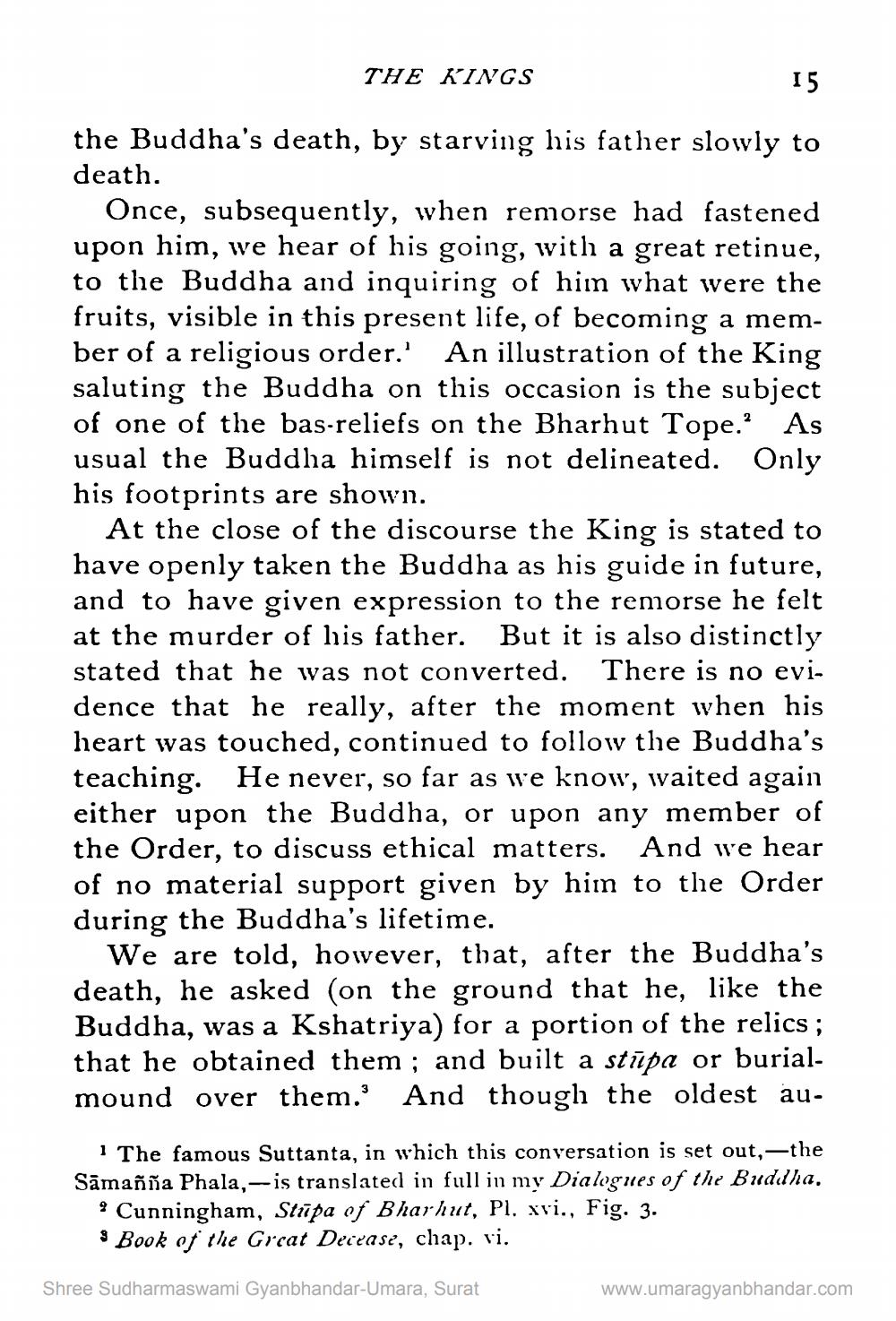________________
15
the Buddha's death, by starving his father slowly to death.
THE KINGS
Once, subsequently, when remorse had fastened upon him, we hear of his going, with a great retinue, to the Buddha and inquiring of him what were the fruits, visible in this present life, of becoming a member of a religious order.' An illustration of the King saluting the Buddha on this occasion is the subject of one of the bas-reliefs on the Bharhut Tope.' As usual the Buddha himself is not delineated. Only his footprints are shown.
At the close of the discourse the King is stated to have openly taken the Buddha as his guide in future, and to have given expression to the remorse he felt at the murder of his father. But it is also distinctly stated that he was not converted. There is no evidence that he really, after the moment when his heart was touched, continued to follow the Buddha's teaching. He never, so far as we know, waited again either upon the Buddha, or upon any member of the Order, to discuss ethical matters. And we hear of no material support given by him to the Order during the Buddha's lifetime.
We are told, however, that, after the Buddha's death, he asked (on the ground that he, like the Buddha, was a Kshatriya) for a portion of the relics; that he obtained them; and built a stūpa or burialmound over them." And though the oldest au
The famous Suttanta, in which this conversation is set out,-the Sāmañña Phala,-is translated in full in my Dialogues of the Buddha. * Cunningham, Stupa of Bharhut, Pl. xvi., Fig. 3. Book of the Great Decease, chap. vi.
Shree Sudharmaswami Gyanbhandar-Umara, Surat
www.umaragyanbhandar.com




